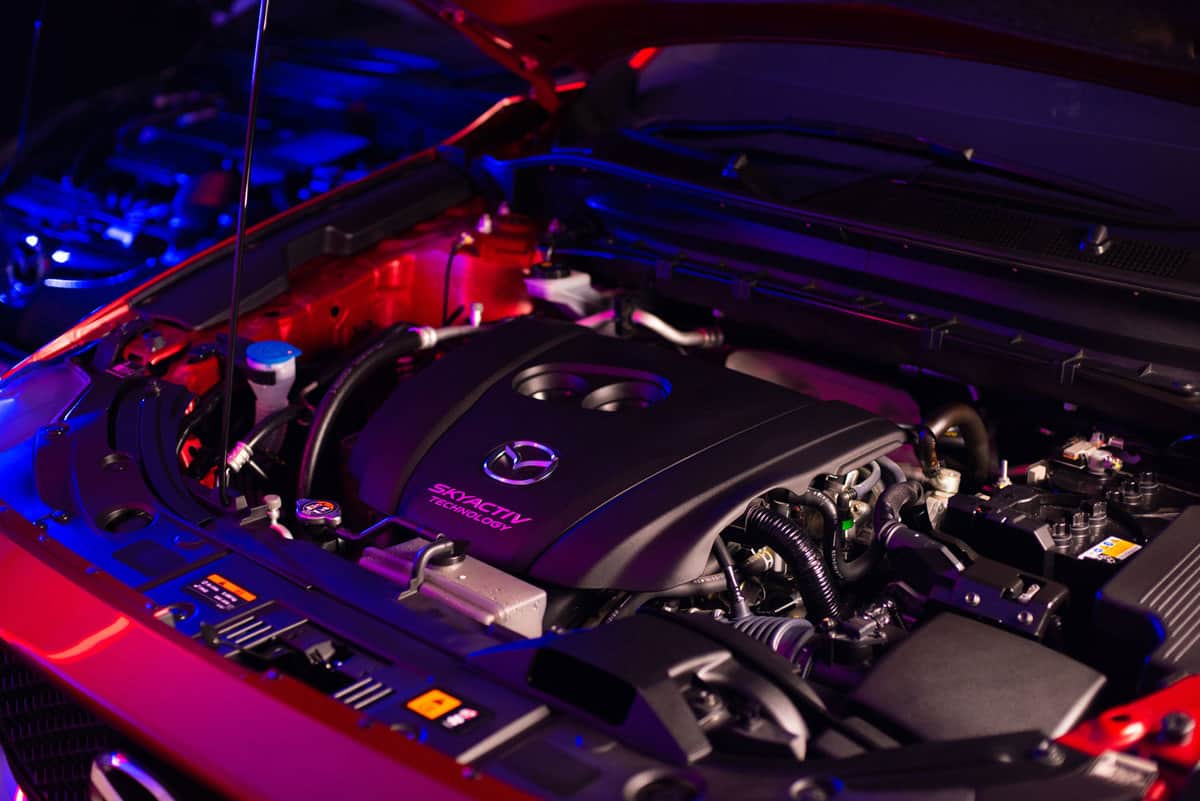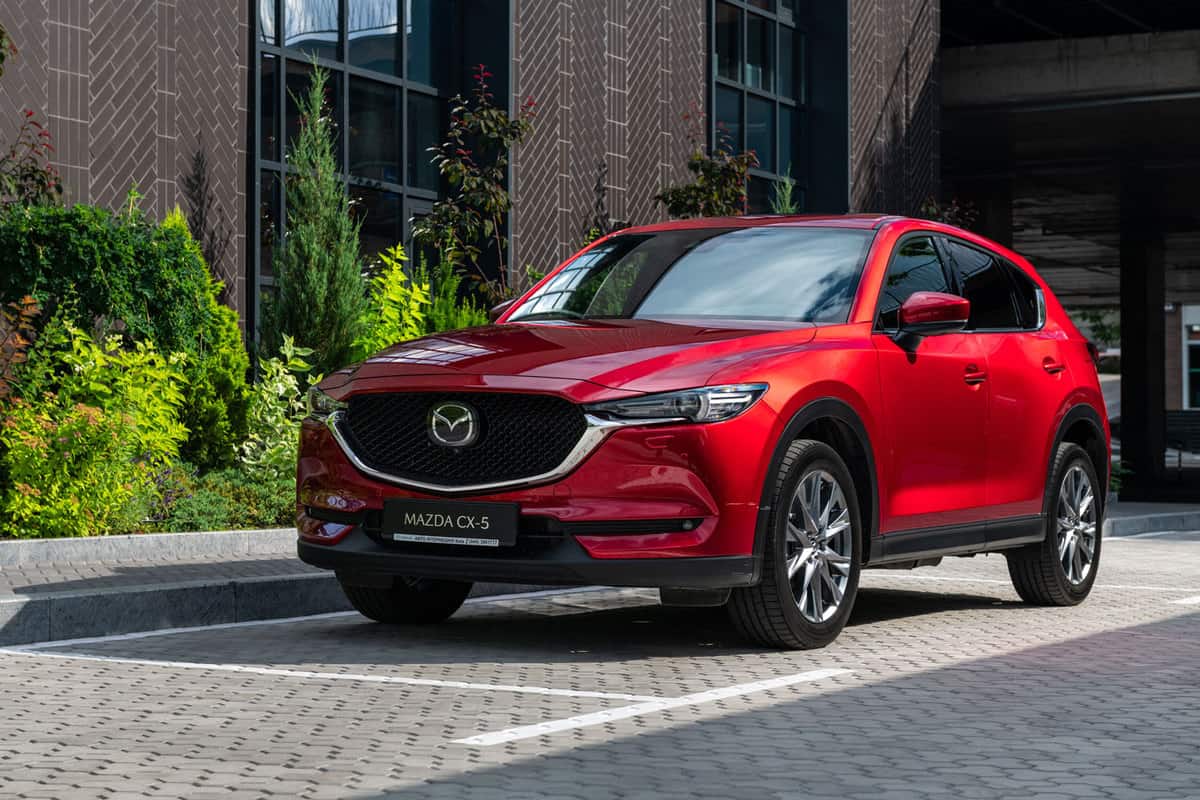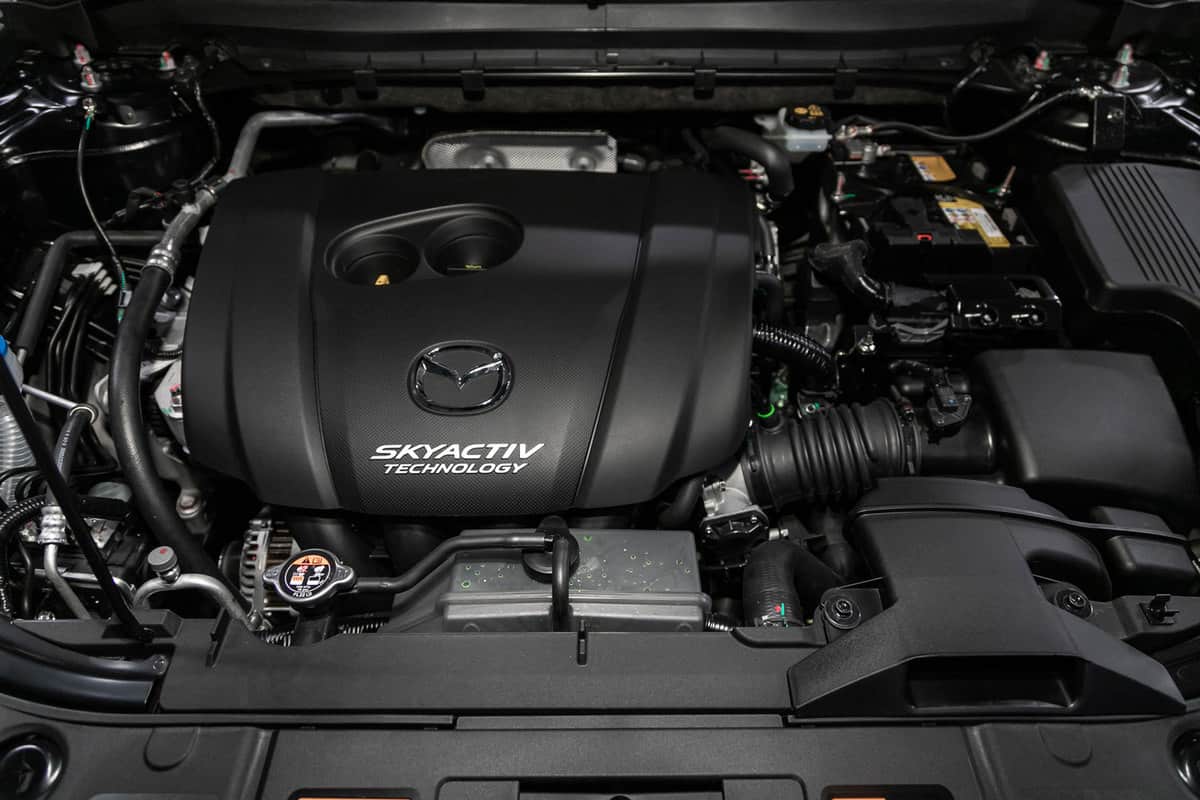Before purchasing a Mazda CX-5, it is important to know how long its vital mechanical components will last. For example, how long will the engine, brakes, and battery last before needing to be repaired? We have researched to give you an average lifespan on these mechanical parts below.
On average, you can expect the engine, battery, and brakes to last this many miles or years:
- Brakes [50,000 miles]
- Battery [3 to 5 years]
- Engine [200,000 to 250,000 miles]
These mechanical parts have a long life. Therefore, they need to be appropriately maintained. This article will discuss how to maintain your Mazda CX-5 to reach these milestones properly. In addition, we will answer other frequently asked questions about the Mazda CX-5, so read on!
![How Long Will A Mazda CX-5 Last? [Inc. Engine, Battery And Brakes]](https://vehq.com/wp-content/uploads/2022/03/how-long-will-mazda-cx-5-last.png)
How Long Will A Mazda CX-5 Last? [Inc. Engine, Battery And Brakes]
The engine in a Mazda CX-5 can last up to 200,000 to 250,000 miles before needing to be replaced. However, replacing an engine is costly and time-consuming; we suggest that you follow the maintenance schedule laid out by your owner's manual and use the proper oil and fluids to help extend the life of your engine.
Mazda recommends changing the oil on the Mazda CX-5 every 7,500 miles. However, if you don't drive your Mazda CX-5 frequently, it is still good to change the oil at least twice a year.
The reason is that oil breaks down over time and becomes contaminated by dirt and other particles. Therefore, oil should be changed more frequently if you drive your car in stop-and-go traffic, tow heavy loads, or often operate the vehicle at high speeds.
Changing the oil is vital to the health of your engine because it cleans deposits and debris from the engine, lubricates it to prevent parts from grinding together, and transfers heat away from the engine.
If you plan to keep your Mazda CX-5 for a long time, then changing the oil every 3,000-5,000 miles will help you reach 200,000+ miles as recommended by Mazda.
In addition to changing the oil regularly, it is also essential to keep an eye on the coolant and antifreeze levels in your Mazda CX-5. If these levels are too low, it can cause the engine to overheat. You can purchase a coolant tester from your local auto store or online to check the levels yourself.
Also, changing your cabin filters and oil filter regularly will protect the life of your engine.
It is also essential to keep your Mazda CX-5 clean! Cleaning the engine bay regularly will help prevent dirt and debris from accumulating and causing damage to your engine.

How long will the battery last?
On average, a Mazda CX-5 can have a battery that lasts 3 to 5 years. Proper battery maintenance is vital to having your battery last as long as possible.
Some problems that could impact the life of your battery are leaving turn signals, headlights, and interior lights on too frequently. Not correctly maintaining the electrical system in the car by keeping fuses and connections clean and not charging the battery promptly after it has been drained could also affect your battery.
If you notice corrosion on the battery terminals, clean them with baking soda and water. If your battery is older than five years, it may be time to replace the battery. You can have this done at most car part stores or dealerships quickly.
How long will the brakes last?
The brakes on a Mazda CX-5 can last up to 50,000 miles. You need to maintain them properly for your brakes to work correctly and last as long as possible.
It would be best if you had your brake pads examined at least once a year by your local mechanic. They will use an indicator to measure how much of the pad is left and let you know if it is time for new brake pads.
You also need to check that there are no leaks in your brake lines or hoses which could impact the performance and longevity of your brakes. Leakage can cause your brake fluid levels to drop, which will eventually lead to a complete failure of the brakes.
In addition, it is essential to avoid poor driving habits to help the health of your brakes. For example, braking heavily and abruptly can cause premature wear and tear on your brakes.
Are Mazda CX-5s expensive to maintain?

Luckily, the Mazda CX-5 is one of the least expensive mid-size SUVs on the market. Consumers can expect to pay on average $447 a year on annual maintenance.
Compared to other mid-size SUVs on the market, this is significantly less, averaging $573 a year.
Compared to all other vehicles on the market, the Mazda CX-5 has a lower annual maintenance cost. All other vehicles have a combined average maintenance cost of $652 a year.
However, it is vital to take into consideration your driving habits. For example, if you drive a lot in stop-and-go traffic, starting and stopping your car a lot, or you take road trips a lot, these driving habits will wear down your engine more quickly, which could raise your annual maintenance costs.
In contrast, if you do not frequently use the gas pedal and brake much, this type of driving will help the longevity of your vehicle.
Is a Mazda CX-5 reliable?
The Mazda CX-5 ranks 1st out of 26 other mid-size SUVs on the market regarding reliability. However, the severity of the problems is lower than usual and less frequent.
This means that consumers can expect a very dependable and less problematic car compared to the competition.
In addition, the Mazda CX-5 also has a higher dependability score than other vehicles on the market. To have a high score, the vehicle needs to be more reliable and have fewer problems compared to other models on the market.
In conclusion, if you want a car that requires less maintenance and has a higher chance of lasting you a long time, then the Mazda CX-5 is worth considering.
What's the best year for a Mazda CX-5?
If you are looking for reliability but more bells and whistles, then the Mazda CX-5 from recent years is the way to go. But, of course, this means that 2018, 2019, 2020, 2021, and 2022 models feature more tech features and robust engines.
However, if you don't want to spend the money on a newer model, the pre-2017 CX-5 is also a good choice.
Although they do not have as many features, they still get great gas mileage and require less maintenance. However, if you look at an older model, it is still good to always check a CarFax report. This will give you a detailed history of the car and tell you if there have been any accidents or significant problems.
A detailed CarFax report will give you peace of mind and help you to know what you're getting into when purchasing a used car.
How often should you service a Mazda CX-5?
The first service you should do is at 7,500 miles. During this time, you should have the oil and oil filter changed. In addition, it is crucial to have other parts inspected, such as the air filter, brakes, and hoses.
You should also have your tires rotated at this time, as this is essential to help prolong the life of your tires.

Service at 15,000 miles
You should have the service at 15,000 miles but have the brake pads inspected. If you live in a harsher climate and drive more stop-and-go traffic, the brakes may need to be changed.
It is important to note if there was any fluid leakage detected. If there was, make sure to get this fixed as soon as possible.
Service at 22,500 miles
It may be time to change your tires, brake pads, brake rotors, and cabin air filter during this time. In addition, if certain parts look okay, it may be time to replace them during the following oil change [7,500 miles].
Service at 37,500 miles
One of the essential services that your Mazda CX-5 will need over the years is a coolant replacement. The radiator and cooling system are essential parts of your car and must be in top condition to keep your engine running smoothly.
Around 37,500 miles, you will also need to have your drive belt replaced. This belt is responsible for rotating the engine, power steering, and alternator. If it fails, it can cause extensive damage to your car.
Lastly, it would help if you had the transmission serviced. This may include draining the fluids, replacing gaskets, or checking for leaks.
Service at 75,000 miles
Shock absorber/strut replacement is one of the essential services that your Mazda CX-5 will need over the years. The shocks help keep your car stable and in control while you're driving. If they are not working correctly, it can cause your car to wobble or even veer off the road. It is essential to have a qualified mechanic replace your shocks as they are a crucial part of your car's suspension system.
At this time, the spark plugs should also be replaced. This is an integral part of your engine and prevents you from stalling or misfiring.
Timing belt replacement is another important service that your Mazda CX-5 will need over the years. The timing belt is responsible for keeping the engine running in sync, and if it fails, it can cause extensive damage. This can be done by a qualified mechanic and should include checking the belt's tension, replacing the water pump, and replacing the seals.

Final Thoughts
Whether it is a Mazda CX-5 or another vehicle, sticking to the recommended maintenance schedule is vital to the vehicle's health. Be sure to double-check with your dealer for specific maintenance requirements.
For more maintenance guides, check out our website:
How Long Do Nissan Engines Last?

These have timing chain no timing belt. They should last the life of the engine, unless abused. Not sure where or why it states timing belt… Honda’s engines have timing belts on most engines, some finally have timing chains.